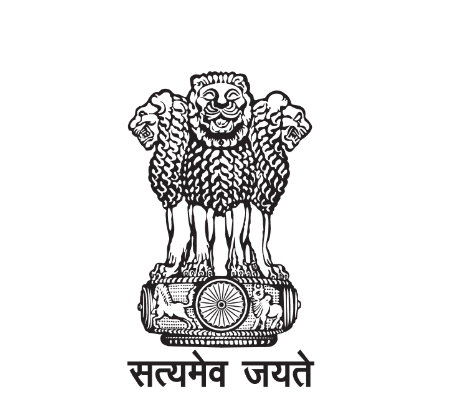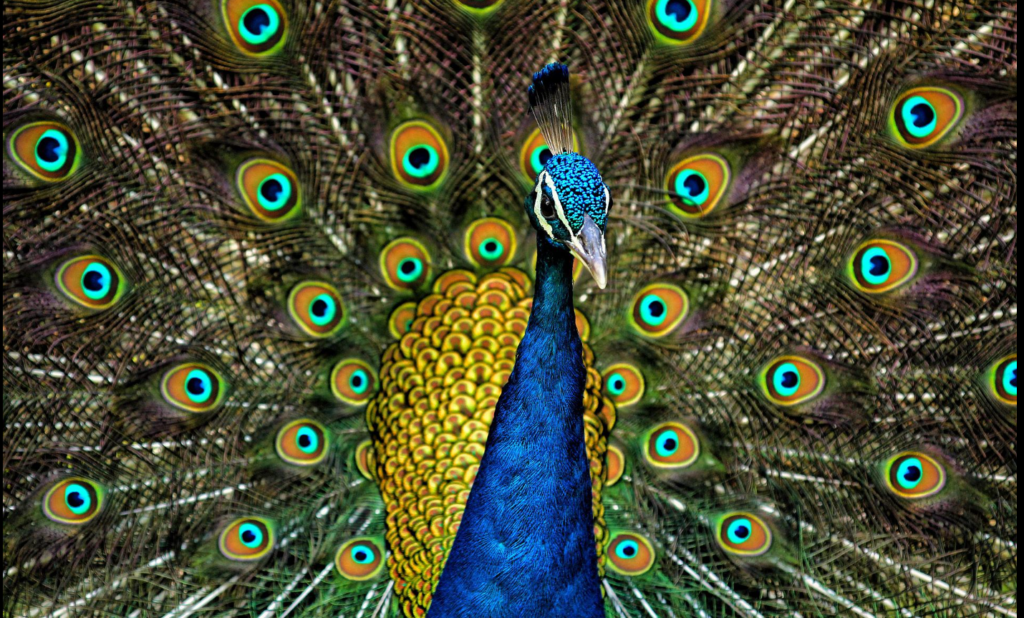Introduction
Discover India’s vibrant heritage through its iconic national symbols, each embodying profound cultural significance. From the majestic Bengal Tiger, symbolising strength and grace, to the sacred Lotus flower representing purity and enlightenment. The Peafowl, or Indian Peafowl, symbolises elegance and beauty, while the national emblem, Ashoka Chakra, signifies law and dharma. The Indian flag, with its tri-colours saffron for courage, white for truth, and green for faith, epitomises the nation’s unity in diversity. These symbols encapsulate India’s rich tapestry, reflecting a harmonious blend of tradition and modernity, capturing the essence of a diverse and culturally rich nation.
National Symbols of India: Introduction
India, a land of rich cultural heritage and diversity, boasts several national symbols that encapsulate the essence of its identity. These symbols serve as powerful emblems representing the historical, cultural, and natural aspects of the nation. The significance of these symbols lies in their ability to unify a diverse population under a common thread of shared values and pride.
The national flag, with its tricolour of saffron, white, and green, adorned with the Ashoka Chakra, symbolises courage, peace, and truth. It is a visual representation of India’s struggle for independence and the harmonious coexistence of its people. The national emblem, featuring the Lion Capital of Ashoka, signifies sovereignty, integrity, and strength.
India’s national anthem, “Jana Gana Mana,” written by Rabindranath Tagore, resonates with the spirit of unity in diversity, reflecting the country’s linguistic and cultural multiplicity. The national song, “Vande Mataram,” penned by Bankim Chandra Chattopadhyay, invokes a deep sense of patriotism and love for the motherland.
The Indian Peafowl, or the Indian Peacock, holds the prestigious title of the national bird, symbolizing grace, beauty, and elegance. The Bengal Tiger, designated as the national animal, represents strength, agility, and resilience.
These symbols are not merely icons they are rooted in the collective consciousness of the Indian people, serving as a source of inspiration and pride. They play a crucial role in fostering a sense of belonging and unity among the diverse population, contributing to the unique tapestry that is India’s cultural identity.
The Significance of National Symbols
National symbols play an important role in encapsulating the essence of a country’s cultural, historical, and national identity. These symbols, ranging from flags and anthems to emblems and landmarks, serve as visual and auditory representations of a nation’s unique heritage. They are not mere symbols rather, they carry deep historical and cultural significance, acting as a unifying force for citizens.
National symbols often reflect a country’s history, embodying the struggles, triumphs, and shared experiences of its people. For instance, a flag’s colours and symbols may convey historical milestones, while an anthem’s lyrics encapsulate the national ethos. These symbols foster a sense of pride and belonging among citizens, reinforcing a collective identity.
List of All National Symbols of India with Names
| SL.No | Title | Symbol |
| 1 | National Flag | Tricolor (Horizontal Stripes of Saffron, White, and Green with Ashoka Chakra) |
| 2 | National Emblem | Lion Capital of Ashoka |
| 3 | National Anthem | Jana Gana Mana |
| 4 | National Song | Vande Mataram |
| 5 | National Calendar | Saka Calendar |
| 6 | National River | Ganges |
| 7 | National Flower | Lotus |
| 8 | National Tree | Banyan |
| 9 | National Fruit | Mango |
| 10 | National Animal | Bengal Tiger |
| 11 | National Bird | Indian Peafowl (Peacock) |
| 12 | National Aquatic | Animal Gangetic Dolphin |
| 13 | National Heritage Animal | Indian Elephant |
| 14 | National Reptile | King Cobra |
| 15 | National Currency | Indian Rupee (INR) |
| 16 | National Song of India | Jana Gana Mana |
| 17 | National Game | Field Hockey |
Understanding India’s Identity
India’s identity is intricately woven with a rich tapestry of national symbols that reflect its diverse cultural heritage. The national flag, with its tricolour of saffron, white, and green, symbolises courage, truth, and faith, while the Ashoka Chakra in navy blue represents law and dharma.
The national anthem, “Jana Gana Mana,” is a linguistic amalgamation, celebrating India’s linguistic diversity. The emblem of India features the Lion Capital of Ashoka, representing the nation’s commitment to justice, equality, and non-violence.
India’s unique identity lies in its cultural mosaic, encompassing various religions, languages, and traditions. National symbols such as the lotus, peacock, and banyan tree embody this diversity, representing different facets of the nation’s culture. The Taj Mahal, a UNESCO World Heritage Site, stands as a symbol of India’s architectural prowess and multicultural history.
These symbols contribute to a sense of national pride by fostering unity among the diverse populace. They encapsulate the spirit of India’s pluralistic society and serve as a reminder of its historical strength. Through these symbols, India projects a narrative of inclusivity, contributing to a shared sense of belonging and pride among its people.
The National Flag of India
The National Flag of India, adopted on July 22, 1947, is a tricolour of deep saffron, white, and dark green horizontal stripes with a navy blue Ashoka Chakra in the centre. The saffron represents courage and sacrifice, the white represents truth and peace, and the green symbolises faith, fertility, and valour. The 24-spoke navy blue Ashoka Chakra in the centre represents the law of dharma and embodies the wheel of life.
The design of the flag has historical significance rooted in India’s struggle for independence. The tricolour was conceptualized by Mahatma Gandhi, and the spinning wheel used by the Indian National Congress was originally proposed as the central motif. However, later, the Ashoka Chakra was chosen to represent the eternal wheel of law. The adoption of the flag marked the culmination of a long fight for freedom, symbolising unity in diversity.
Over the years, the design has remained consistent, while the proportions of the flag were officially standardized in 1951. The Indian national flag serves as a powerful emblem, reflecting the ideals and aspirations of a sovereign and diverse nation.
National Emblem of India

The national emblem of India is a symbol of power and represents the country’s rich cultural heritage. It features the Lion Capital of Ashoka, a sculpture dating back to the 3rd century BCE, with four lions standing back to back. The lions symbolise power, courage, and confidence. The emblem also includes the Dharma Chakra (wheel of law) flanked by a horse and a bull. The historical significance lies in its association with Emperor Ashoka and the principles of dharma. Politically, it signifies the unity of the nation. The emblem is commonly used on official documents, currency, and government buildings, reflecting India’s identity and constitutional values.
National Anthem: Jana Gana Mana
“Jana Gana Mana,” India’s national anthem, was composed by Rabindranath Tagore in 1911. Its lyrics were adopted as the anthem in 1950 when India became a republic. The anthem is a tribute to the diverse cultures and landscapes of India, emphasising unity in diversity. Its meaning celebrates the nation’s identity and collective strength. “Jana Gana Mana” is sung on various occasions, including national events, ceremonies, and school gatherings. Its significance lies in fostering a sense of patriotism and unity among Indians, symbolising the country’s rich heritage. The anthem’s resonance is felt across India, from schools to official functions, embodying national pride.
National Song: Vande Mataram
“Vande Mataram,” penned by Bankim Chandra Chattopadhyay, holds the status of India’s national song. Its suggestive verses express reverence for the motherland. The song played a pivotal role during India’s freedom struggle, becoming a rallying cry for independence. Adopted by leaders like Mahatma Gandhi, it went patriotic fervour and unity among diverse communities. Its cultural and historical significance lies in encapsulating the spirit of India’s fight for freedom, emphasising the nation’s rich heritage. The iconic phrase “Vande Mataram” translates to “I bow to thee, Mother” in Sanskrit, encapsulating a profound sense of devotion and pride for the country.
The Majestic Indian Peafowl (Peacock)

The Indian Peafowl, or Peacock (Pavo cristatus), proudly reigns as the national bird of India. Renowned for its bright plumage, the male peacock displays a vibrant array of iridescent blues, greens, and golds during romance, captivating onlookers with its stunning fan-shaped tail. This mesmerising spectacle symbolises beauty, grace, and elegance.
Embedded in Indian culture and mythology, the peacock holds deep symbolic importance. In Hinduism, it is associated with Saraswati, the goddess of wisdom, and Kartikeya, the god of war. The bird’s imagery is also linked to rain and fertility in various folk traditions.
Embodying the country’s rich biodiversity, the peacock is celebrated in art, literature, and dance forms like Bharatanatyam. Its portrayal in religious iconography and its frequent presence in Indian folklore underscore its enduring cultural significance. The Indian Peafowl stands as a majestic emblem, reflecting the nation’s vibrant heritage and natural splendour.
The Regal Bengal Tiger

The Regal Bengal Tiger, India’s national animal, symbolises the country’s rich biodiversity and cultural heritage. Its significance extends beyond mere symbolism, as the Bengal Tiger plays a crucial role in maintaining ecological balance. Unfortunately, habitat loss and poaching have threatened its existence, prompting extensive conservation efforts. India has implemented various initiatives, including protected reserves and anti-poaching measures, to safeguard this majestic species. Conservation programs not only focus on preserving the tiger but also contribute to overall biodiversity conservation. Culturally, the Bengal Tiger holds immense importance, featuring prominently in folklore, mythology, and art. Recognizing its pivotal role in the ecosystem and national identity, India’s commitment to tiger conservation reflects a broader dedication to preserving the nation’s natural heritage.
Symbol of Purity: The Lotus

The Lotus, India’s national flower, holds profound symbolism in the country’s culture and religion. Revered for its purity and strength, the Lotus is a metaphor for spiritual enlightenment emerging from the muddy waters of worldly existence. In Hinduism, it symbolises divine beauty and purity, associated with deities like Brahma, Vishnu, and Lakshmi. The Lotus’s representation extends to art and architecture, where its intricate depictions adorn temples and monuments. Its unfolding petals are a metaphor for the unfolding of the soul. With its deep cultural significance, the Lotus stands as a timeless emblem, encapsulating spiritual ideals in the vibrant tapestry of Indian heritage.
The Sacred Banyan Tree

The Banyan tree (Ficus benghalensis), revered as India’s national tree, holds profound religious and cultural significance. Revered in Hinduism, it symbolises the Trimurti, representing the roots as Brahma, the trunk as Vishnu, and the branches as Shiva. Often found near temples, its expansive canopy provides shade for spiritual gatherings. In traditional practices, sacred rituals, and meditation, the Banyan is a sacred site, believed to possess divine energies. Its aerial roots, touching the ground and forming new trunks, signify continuity and eternal life. The Banyan’s enduring presence echoes the deep-rooted spirituality ingrained in India’s rich cultural tapestry.
Ganges: India’s Holy River

The Ganges, India’s sacred river, flows majestically through the heart of the country, embodying spiritual significance deeply rooted in Hindu culture. Revered as the goddess Ganga, it is a lifeline for millions, providing sustenance and sanctity. Pilgrims embark on journeys to its banks, seeking spiritual purification through ritualistic baths. The Ganges witnesses ancient traditions like the evening Ganga Aarti, where lamps are lit to honour the river. Despite environmental challenges, the Ganges remains a symbol of devotion, intertwining with India’s cultural fabric, sustaining beliefs, and fostering a sacred connection between people and nature.
National Currency

The national currency, presented by the image, bears rich historical significance, reflecting the economic and cultural evolution of its issuing nation. Established as a symbol of sovereignty, it embodies the country’s identity. Its design often incorporates iconic landmarks, historical figures, or cultural motifs. To combat counterfeiting, advanced security features like holographic strips, watermarks, and intricate patterns are embedded. These measures ensure the currency’s integrity, bolstering public trust and preserving economic stability. As a tangible representation of a nation’s financial resilience, the national currency serves as a testament to its economic prowess and cultural heritage.
National Calendar
The chosen calendar system is the Gregorian calendar, widely adopted internationally and of significant cultural and historical importance. Introduced by Pope Gregory XIII in October 1582, it replaced the Julian calendar and aimed to align the timing of the spring equinox with the Easter holiday. Its adoption became a pivotal moment in the history of timekeeping, fostering uniformity in global date reckoning.
Numerous national holidays and celebrations are tied to the Gregorian calendar, reflecting diverse cultural, religious, and historical influences. For instance, New Year’s Day marks the beginning of the year across many cultures, while Christmas and Easter hold profound religious significance for Christians. Additionally, secular observances such as Independence Days and national commemorations align with specific dates on the Gregorian calendar, unifying communities and fostering a sense of shared identity. The calendar serves as a universal tool for organizing time, facilitating global communication, and anchoring diverse societies in a shared temporal framework.
National Pledge
The concept of a National Pledge typically refers to a solemn promise or declaration that citizens make to their country. While the specific content varies among nations, these pledges commonly express loyalty, commitment to shared values, and dedication to national unity. One notable example is India’s National Pledge, written by the freedom fighter Pandit Jawaharlal Nehru. It emphasizes principles such as unity, integrity, and secularism. The pledge was crafted to instil a sense of common purpose among diverse citizens and promote national harmony. It is recited in schools and public gatherings, reinforcing the values that underpin India’s democratic and pluralistic society. The National Pledge serves as a symbolic expression of patriotism and a reminder of the collective responsibility citizens bear toward their nation’s progress and well-being.
National Heritage Animal
The elephant holds the esteemed status of being India’s National Heritage Animal. Revered in Indian culture for its historical and cultural significance, elephants are integral to religious ceremonies, festivals, and traditional practices. Depicted in ancient art and literature, these majestic creatures symbolize strength, wisdom, and prosperity. However, they face numerous threats, including habitat loss and human-wildlife conflict.
In response, India has implemented conservation initiatives and special programs to safeguard elephants. Projects focus on habitat preservation, mitigating human-elephant conflict, and promoting awareness. Protected areas and corridors are established to ensure safe migration, and communities are educated on coexistence with these gentle giants. India’s commitment to preserving its National Heritage Animal reflects a broader global effort to conserve endangered species and maintain ecological balance. The elephant’s protection aligns with India’s cultural ethos, emphasizing harmony between humans and nature.
National Game
The history of cricket in India is intertwined with the nation’s colonial past and has evolved into a cultural phenomenon, making it the de facto national game in the hearts of many. Introduced by the British in the 18th century, cricket quickly gained popularity, becoming a source of entertainment and identity. Over the years, it transcended its colonial roots to symbolize resilience and unity, especially during pivotal moments in Indian history.
India achieved its first cricketing milestone by winning the 1983 Cricket World Cup under the captaincy of Kapil Dev. This victory marked a turning point, propelling cricket to the forefront of the nation’s consciousness. The legendary Sachin Tendulkar emerged as a cricketing icon, breaking records and capturing the imagination of millions. His contributions elevated Indian cricket to unprecedented heights.
The Indian cricket team’s triumph in the 2007 ICC World Twenty20 and the 2011 ICC Cricket World Cup solidified their status as a cricketing powerhouse. Notable players like Virat Kohli and Rohit Sharma have continued the legacy, consistently achieving milestones and leading the team to victories on the international stage.
Cricket is not merely a sport in India; it’s a cultural phenomenon that unites a diverse nation. The Indian Premier League (IPL), a domestic T20 league, has further amplified the sport’s popularity, blending entertainment and athleticism. Cricket’s evolution in India mirrors the nation’s journey, intertwining history, passion, and success on the global stage.
National Aquatic Animal
The Irrawaddy dolphin (Orcaella Brevirostris) holds the esteemed title of the national aquatic animal in several countries, including Myanmar and Laos. This captivating cetacean, known for its distinctive rounded forehead and friendly demeanour, plays a crucial role in maintaining the ecological balance of riverine ecosystems.
Irrawaddy dolphins primarily inhabit freshwater environments, such as rivers, estuaries, and lakes. Their diet consists of various fish species, contributing to the regulation of fish populations and ensuring the health of aquatic ecosystems. Moreover, these dolphins serve as indicators of environmental health, as their presence reflects the well-being of their habitats.
Despite their ecological importance, Irrawaddy dolphins face numerous threats, including habitat degradation, pollution, and accidental entanglement in fishing gear. Conservation initiatives have been implemented to safeguard these creatures and their habitats. Community-based projects involve local communities in monitoring and protecting the dolphins, fostering a sense of responsibility among residents. Additionally, stricter regulations on fishing practices aim to reduce accidental captures.
Education and awareness programs play a vital role in promoting the conservation of Irrawaddy dolphins. By raising public awareness about the ecological significance of these creatures, communities are empowered to actively participate in conservation efforts. Collaborative approaches involving governments, non-governmental organisations, and local communities are essential to ensure the long-term survival of the Irrawaddy dolphin, thereby preserving the health and biodiversity of the aquatic ecosystems they inhabit.
National Vegetables
Pumpkin, the national vegetable, is a nutritional powerhouse rich in vitamins A and C, potassium, and fibre. Its vibrant orange hue signifies high beta-carotene content, promoting eye health and immune function. Culinary versatility defines pumpkin, starring in savoury dishes like soups, stews, and roasts, as well as sweet treats like pies and muffins. Its seeds offer a nutritious snack when roasted.
Culturally, pumpkin holds diverse significance. In many cultures, it symbolises abundance and is a staple in festive dishes, particularly during harvest celebrations. Beyond its culinary applications, pumpkins have historical ties to indigenous communities, playing roles in rituals and traditions. The vegetable’s adaptability, nutritional richness, and cultural prominence make it a fitting symbol of national pride.
National Fruit
The mango, known scientifically as Mangifera indica, is not only a delicious tropical fruit but also a nutritional powerhouse. Rich in vitamins A, C, and E, as well as fibre, it supports immune function, skin health, and digestion. The high antioxidant content in mangoes contributes to the prevention of various diseases.
Culturally and religiously, the mango holds significant symbolism in India. In Hinduism, it is often associated with fertility and is considered a symbol of love. The mango tree is believed to fulfil wishes, and the fruit itself is linked to various myths and legends. Mango festivals are celebrated in different regions of India, showcasing the cultural importance of this fruit.
The choice of a national fruit often reflects the agricultural significance and cultural heritage of a country. The mango, with its rich nutritional profile and cultural symbolism, represents an integral part of India’s identity.
Conclusion: Embracing India’s Heritage
India’s national symbols stand as proud representatives of the nation’s rich and diverse heritage, encapsulating the essence of its history, culture, and values. The majestic Ashoka Chakra, depicting the wheel of law, symbolises the eternal dharma and the cyclical nature of time. The national emblem, an adaptation of the Lion Capital of Ashoka, reinforces the spirit of unity and strength. The national flag, with its tricolour of saffron, white, and green, represents courage, truth, and faith, reflecting the collective aspirations of a vibrant nation.
These symbols play a crucial role in preserving India’s heritage by serving as visual reminders of its glorious past and the struggles for independence. They transcend mere representation, becoming beacons of identity and unity. Embracing these symbols is not just a patriotic gesture it is a celebration of India’s remarkable journey.
As citizens, we are the torchbearers of this heritage. It is our duty to understand and appreciate the significance of these symbols, passing on the legacy to future generations. The Ashoka Chakra reminds us of the eternal principles that guide us, fostering a sense of responsibility towards society. The national emblem instils pride in our shared history, urging us to contribute to the nation’s progress. The tricolour flag unites us in diversity, symbolising the harmonious coexistence of different cultures, religions, and languages.
In conclusion, embracing India’s heritage through its national symbols is a profound way to connect with the roots of our civilization. Let us recognize the symbolism embedded in these emblems, and in doing so, cultivate a deeper appreciation for the values they represent. By honouring these symbols, we not only pay homage to our past but also actively contribute to the preservation and enrichment of India’s cultural tapestry. Together, let us proudly carry the legacy forward, ensuring that the essence of our heritage continues to shine brightly in the tapestry of our nation.
To further explore educational content and gain deeper insights into history and learning, visit Chrysalis High.


